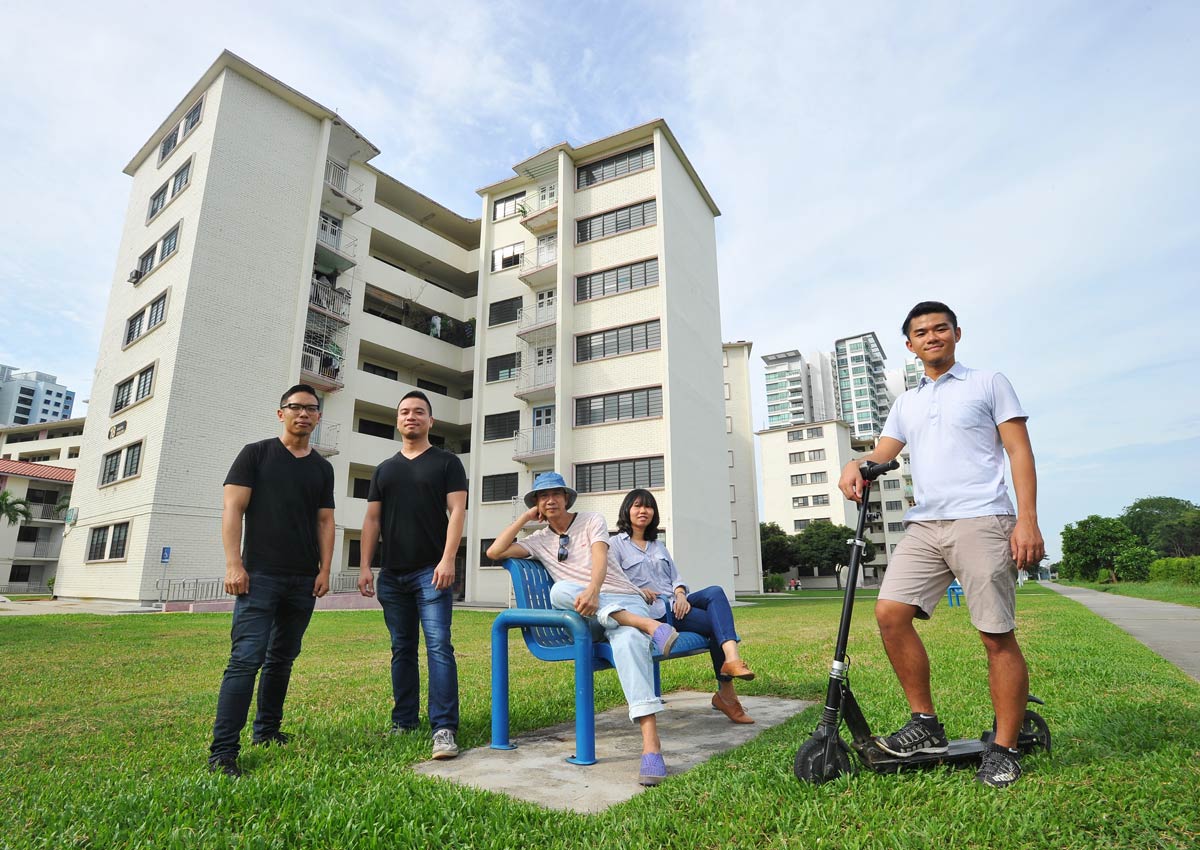A group of architects is piecing together a conservation paper to save parts of Dakota Crescent, one of Singapore’s oldest public housing estates.
The group is led by Mr Jonathan Poh. The plan is to submit the paper to the Ministry of National Development (MND).
One option being suggested is conserving the entire area and re-adapting some of the blocks there for other uses such as food and beverage businesses and a hotel.
The estate has a variety of two- storey, three-storey and seven-storey brick-clad blocks.
A second option involves selecting some of the estate’s iconic structures for protection.
These include its eight “butterfly blocks” – curved buildings with two perpendicular wings at the back; Blocks 10 and 20, which hug the blue-mosaic-tiled dove-design playground; and five blocks which face Geylang River.
Their draft proposal is slated for submission to Mountbatten MP Lim Biow Chuan at the end of the month. A full conservation report is due to be ready later this year.
As part of the Government’s rejuvenation plans for ageing Housing Board estates, the 17 rental blocks in Dakota Crescent will have to go, and residents must leave by the end of this year.
Residents can rent flats at nearby Cassia Crescent for the same price based on the existing tenancy. Those eligible who choose to buy a new flat elsewhere can get a relocation grant of up to $15,000.
The vacated site will be reserved for future residential development.
Mr Poh, 36, who started the Save Dakota Crescent campaign in 2014, told The Straits Times: “This is a unique estate. You don’t see such open space architectural plans elsewhere in Singapore. Our plan aims to keep Dakota Crescent’s distinctive features, like its iconic blocks, large courtyards and streetscape.”
Blocks 10 and 20 are similar to the British-built and now-razed blocks that used to stand in St Michael’s estate in Whampoa and the Princess and Duchess estates in Queenstown.
The blocks feature alternating balconies and walls along their corridors. Mr Poh said the two Dakota Crescent blocks are the last examples of such architecture here.
Meanwhile, the butterfly blocks were designed for better ventilation with a courtyard between both wings. The flats were built by the Singapore Improvement Trust (SIT) in 1958 and handed to its successor, the HDB, in 1960.
Mr Lim, the MP, has met residents and the architects to discuss the conservation of the estate three times since last October.
He said: “I’m working with these residents to put up a proposal to MND to ask the Government to consider conserving parts of Dakota Crescent. This will allow the people to remember the history of the place and to reminisce about the past and the architectural features.
“If we can keep four to five blocks, I would be very happy. We will work together to package the proposal to persuade the authorities that Dakota Crescent forms part of our heritage and is worth conserving.”
A URA spokesman said both the authority and National Heritage Board (NHB) met the MP, grassroots members, and representatives from the Save Dakota Crescent group last November.
She said the URA has conserved SIT developments built during the same era in Tiong Bahru and Kampong Silat estate, and that the authorities will evaluate the proposal after they receive it.
She added: “In land-scarce Singapore, how much more to conserve is always a dilemma, and has to be balanced against the need to rejuvenate our older estates, and the need for land to meet future needs.”
melodyz@sph.com.sg

This article was first published on May 25, 2016.
Get a copy of The Straits Times or go to straitstimes.com for more stories.






